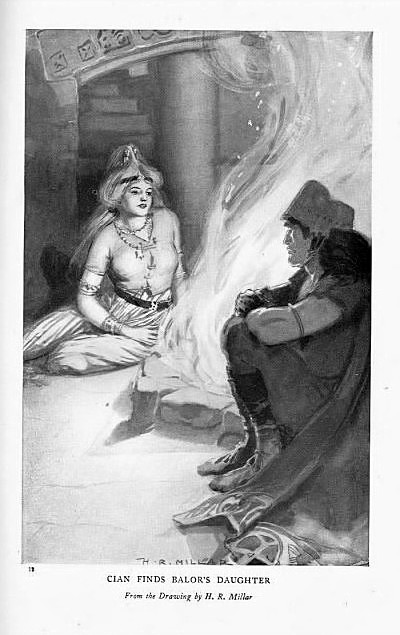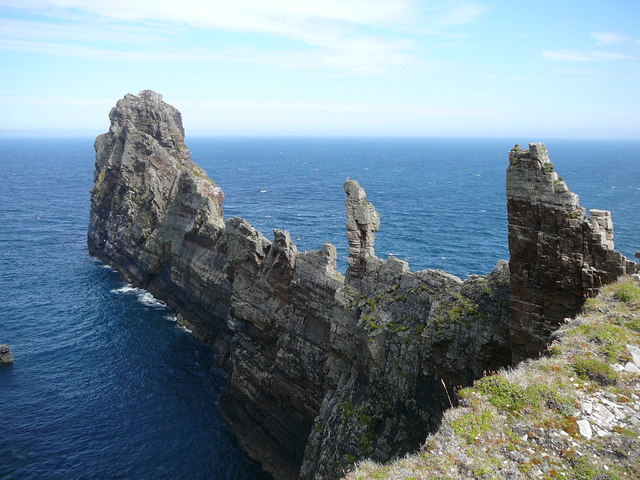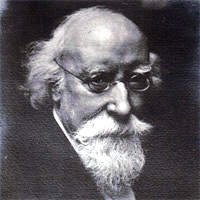|
Ethlinn
In Irish mythology, Ethniu (), or Eithne (Modern Irish pronunciation: ) in modern spelling, is the daughter of the Fomorian leader Balor, and the mother of Lugh. She is also referred to as Ethliu (modern Eithle), Eithlionn (genitive; modern Eithleann), and Ethlinn (dative; modern Eithlinn). Name Ethniu is a fine example of the difficulty of conducting research into Irish mythology. Her oldest version of her name is probably Ethliu or Ethniu, giving rise to the modern Irish name Eithne. However thanks to changes in the Irish language, the lack of standardised spelling for many centuries, and attempts to anglicise the name, variations have arisen. Linguistic ignorance has further confused the issue: the genitive form of ''Ethniu'' is ''Ethnenn'' (modern ''Eithneann'') and the genitive of ''Ethliu'' is ''Ethlenn/Ethlinn'' (modern ''Eithleann/Eithlinn''), as in ''mac Ethlenn'' ("Ethliu's son"). This genitive has often been taken for a nominative, or a mistaken nominative has been ... [...More Info...] [...Related Items...] OR: [Wikipedia] [Google] [Baidu] |
Cian And Ethnea Millar
In Irish mythology, Cian or Cían (), nicknamed Scal Balb, was the son of Dian Cecht, the physician of the Tuatha Dé Danann, and best known as the father of Lugh Lamhfada. Cían's brothers were Cu, Cethen, and Miach. Cían was slain by the Sons of Tuireann, for which Lugh demanded various treasures around the world as éraic (compensation), according to the account in the "Book of Invasions" (''Lebor Gabála Érenn'', LGE) as well as the late romance version "The Fate of the Children of Tuireann". Name Cían means "enduring one"; ''cían'' signifying "long, enduring, far, distant". Scal BalbLebor Gabála Érenn, , p. 101 (Introduction); ¶311 p. 116 ¶330 p. 148–, ¶368 p. 186– is a nickname borne by other personages and means "dumb champion", with "dumb" in the sense of unable to make speech. By most accounts, Lug's mother is the Fomorian princess Ethniu,Lebor Gabála Érenn, ed. tr. ¶311 p. 117 but according to an interpolated text the LGE, Cían is also known by t ... [...More Info...] [...Related Items...] OR: [Wikipedia] [Google] [Baidu] |
Balor
In Irish mythology, Balor or Balar was a leader of the Fomorians, a group of malevolent supernatural beings. He is often described as a giant with a large eye that wreaks destruction when opened. Balor takes part in the Battle of Mag Tuired, and is primarily known from the tale in which he is killed by his grandson Lugh of the Tuatha Dé Danann. He has been interpreted as a personification of the scorching sun, and has also been likened to figures from other mythologies, such as the Welsh Ysbaddaden and the Greek Cyclops. Name The name ''Balor'' or The Lonni may come from Common Celtic ''*Boleros'', meaning "the flashing one". In the early literature he is also referred to as ''Balor Béimnech'' (Balor the smiter), ''Balor Balcbéimnech'' (Balor the strong smiter), ''Balor Birugderc'' (Balor of the piercing-eye), ''Balor mac Doit meic Néid'' (Balor, son of Dot son of Nét) or ''Balor ua Néit'' (Balor, grandson of Nét). Later forms are ''Balor Béimeann'' or ''Balar Bemen' ... [...More Info...] [...Related Items...] OR: [Wikipedia] [Google] [Baidu] |
Cian
In Irish mythology, Cian or Cían (), nicknamed Scal Balb, was the son of Dian Cecht, the physician of the Tuatha Dé Danann, and best known as the father of Lugh Lamhfada. Cían's brothers were Cu, Cethen, and Miach. Cían was slain by the Sons of Tuireann, for which Lugh demanded various treasures around the world as éraic (compensation), according to the account in the "Book of Invasions" (''Lebor Gabála Érenn'', LGE) as well as the late romance version "The Fate of the Children of Tuireann". Name Cían means "enduring one"; ''cían'' signifying "long, enduring, far, distant". Scal BalbLebor Gabála Érenn, , p. 101 (Introduction); ¶311 p. 116 ¶330 p. 148–, ¶368 p. 186– is a nickname borne by other personages and means "dumb champion", with "dumb" in the sense of unable to make speech. By most accounts, Lug's mother is the Fomorian princess Ethniu,Lebor Gabála Érenn, ed. tr. ¶311 p. 117 but according to an interpolated text the LGE, Cían is also known by t ... [...More Info...] [...Related Items...] OR: [Wikipedia] [Google] [Baidu] |
Tory Island
Tory Island, or simply Tory (officially known by its Irish name ''Toraigh''),Toraigh/Tory Island . is an island off the north-west coast of , Ireland, and is the most remote inhabited island of Ireland. The name means "place of steep rocky heights". Language The main spoken language on the island is |
Fomorians
The Fomorians or Fomori ( sga, Fomóire, Modern ga, Fomhóraigh / Fomóraigh) are a supernatural race in Irish mythology, who are often portrayed as hostile and monstrous beings. Originally they were said to come from under the sea or the earth. Later, they were portrayed as sea raiders and giants. They are enemies of Ireland's first settlers and opponents of the Tuatha Dé Danann, the other supernatural race in Irish mythology; although some members of the two races have offspring. The Tuath Dé defeat the Fomorians in the '' Battle of Mag Tuired''. This has been likened to other Indo-European myths of a war between gods, such as the Æsir and Vanir in Norse mythology and the Olympians and Titans in Greek mythology. One theory is that the Fomorians were supernatural beings representing the wild or destructive powers of nature; personifications of chaos, darkness, death, blight and drought.MacCulloch, John Arnott. ''The Religion of the Ancient Celts''. The Floating Press, 2 ... [...More Info...] [...Related Items...] OR: [Wikipedia] [Google] [Baidu] |
Tigernmas
Tigernmas, son of Follach, son of Ethriel, a descendant of Érimón, was, according to medieval Irish legend and historical traditions, an early High King of Ireland. According to the ''Lebor Gabála Érenn'' he became king when he overthrew his predecessor Conmáel in the Battle of Óenach Macha, and within a year of his accession had won twenty-seven battles against the descendants of Eber Finn, almost completely destroying Eber's line. It is said that during his reign gold was first smelted in Ireland, by the wright Iuchadán. Tigernmas was the first king to give drinking-horns to his followers, and the first to have clothes dyed purple, blue and green and decorated with brooches, fringes and ornaments. Seven lakes and three rivers burst from the ground during his reign. After reigning for seventy-seven years (or 100 years according to the Book of Fenagh, P 23), he and three-quarters of the men of Ireland died on Magh Slécht while worshipping Crom Cruach, a cruel deity propiti ... [...More Info...] [...Related Items...] OR: [Wikipedia] [Google] [Baidu] |
John O'Donovan (scholar)
John O'Donovan ( ga, Seán Ó Donnabháin; 25 July 1806 – 10 December 1861), from Atateemore, in the parish of Kilcolumb, County Kilkenny, and educated at Hunt's Academy, Waterford, was an Irish language scholar from Ireland. Life He was the fourth son of Edmond O'Donovan and Eleanor Hoberlin of Rochestown. His early career may have been inspired by his uncle Parick O'Donovan. He worked for antiquarian James Hardiman researching state papers and traditional sources at the Public Records Office. Hardiman had secured O'Donovan a place in Maynooth College which he turned down. He also taught Irish to Thomas Larcom for a short period in 1828 and worked for Myles John O'Reilly, a collector of Irish manuscripts. Following the death of Edward O'Reilly in August 1830, he was recruited to the Topographical Department of the first Ordnance Survey of Ireland under George Petrie in October 1830. Apart from a brief period in 1833, he worked steadily for the Survey on place-name resea ... [...More Info...] [...Related Items...] OR: [Wikipedia] [Google] [Baidu] |
Folklore
Folklore is shared by a particular group of people; it encompasses the traditions common to that culture, subculture or group. This includes oral traditions such as tales, legends, proverbs and jokes. They include material culture, ranging from traditional building styles common to the group. Folklore also includes customary lore, taking actions for folk beliefs, the forms and rituals of celebrations such as Christmas and weddings, folk dances and initiation rites. Each one of these, either singly or in combination, is considered a folklore artifact or traditional cultural expression. Just as essential as the form, folklore also encompasses the transmission of these artifacts from one region to another or from one generation to the next. Folklore is not something one can typically gain in a formal school curriculum or study in the fine arts. Instead, these traditions are passed along informally from one individual to another either through verbal instruction or demonstr ... [...More Info...] [...Related Items...] OR: [Wikipedia] [Google] [Baidu] |
Greek Mythology
A major branch of classical mythology, Greek mythology is the body of myths originally told by the Ancient Greece, ancient Greeks, and a genre of Ancient Greek folklore. These stories concern the Cosmogony, origin and Cosmology#Metaphysical cosmology, nature of the world, the lives and activities of List of Greek mythological figures, deities, Greek hero cult, heroes, and List of Greek mythological creatures, mythological creatures, and the origins and significance of the ancient Greeks' own cult (religious practice), cult and ritual practices. Modern scholars study the myths to shed light on the religious and political institutions of ancient Greece, and to better understand the nature of myth-making itself. The Greek myths were initially propagated in an oral tradition, oral-poetic tradition most likely by Minoan civilization, Minoan and Mycenaean Greece, Mycenaean singers starting in the 18th century BC; eventually the myths of the heroes of the Trojan War and its after ... [...More Info...] [...Related Items...] OR: [Wikipedia] [Google] [Baidu] |
Perseus
In Greek mythology, Perseus (Help:IPA/English, /ˈpɜːrsiəs, -sjuːs/; Greek language, Greek: Περσεύς, Romanization of Greek, translit. Perseús) is the legendary founder of Mycenae and of the Perseid dynasty. He was, alongside Cadmus and Bellerophon, the greatest Greek hero and slayer of monsters before the days of Heracles. He beheaded the Gorgon Medusa for Polydectes and saved Andromeda (mythology), Andromeda from the sea monster Cetus (mythology), Cetus. He was the son of Zeus and the mortal Danaë, as well as the half-brother and great-grandfather of Heracles (as they were both children of Zeus, and Heracles' mother was descended from Perseus). Etymology Because of the obscurity of the name "Perseus" and the legendary character of its bearer, most etymologists presume that it might be pre-Greek; however, the name of Perseus's native city was Greek and so were the names of his wife and relatives. There is some idea that it descended into Greek from the Proto-Indo-Eu ... [...More Info...] [...Related Items...] OR: [Wikipedia] [Google] [Baidu] |
Revue Celtique
A revue is a type of multi-act popular theatrical entertainment that combines music, dance, and sketches. The revue has its roots in 19th century popular entertainment and melodrama but grew into a substantial cultural presence of its own during its golden years from 1916 to 1932. Though most famous for their visual spectacle, revues frequently satirized contemporary figures, news or literature. Similar to the related subforms of operetta and musical theatre, the revue art form brings together music, dance and sketches to create a compelling show. In contrast to these, however, revue does not have an overarching storyline. Rather, a general theme serves as the motto for a loosely-related series of acts that alternate between solo performances and dance ensembles. Owing to high ticket prices, ribald publicity campaigns and the occasional use of prurient material, the revue was typically patronized by audience members who earned more and felt even less restricted by middle-class s ... [...More Info...] [...Related Items...] OR: [Wikipedia] [Google] [Baidu] |
Whitley Stokes (scholar)
Whitley Stokes, CSI, CIE, FBA (28 February 1830 – 13 April 1909) was an Irish lawyer and Celtic scholar. Background He was a son of William Stokes (1804–1878), and a grandson of Whitley Stokes the physician and anti-Malthusian (1763–1845), each of whom was Regius Professor of Physic at the University of Dublin. His sister Margaret Stokes was a writer and archaeologist. He was born at 5 Merrion Square, Dublin and educated at St Columba's College where he was taught Irish by Denis Coffey, author of a ''Primer of the Irish Language''. Through his father he came to know the Irish antiquaries Samuel Ferguson, Eugene O'Curry, John O'Donovan and George Petrie. He entered Trinity College, Dublin in 1846 and graduated with a BA in 1851. His friend and contemporary Rudolf Thomas Siegfried (1830–1863) became assistant librarian in Trinity College in 1855, and the college's first professor of Sanskrit in 1858. It is likely that Stokes learnt both Sanskrit and comparative p ... [...More Info...] [...Related Items...] OR: [Wikipedia] [Google] [Baidu] |








